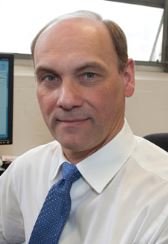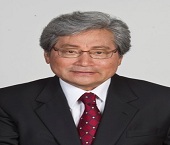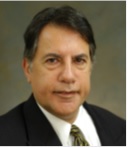Day 2 :
Keynote Forum
Diana Anderson
University of Bradford, UK
Keynote: Diethylstilbestrol-induced oxidative DNA damage in spermatogonial stem cells in vitro
Time : 09:45-10:15

Biography:
Abstract:
Keynote Forum
Georg F Weber
University of Cincinnati, USA
Keynote: Genetic programs of cancer progression
Time : 10:30-11:00

Biography:
Abstract:
- Stem Cells | Stem Cell Therapy | Cellular Therapies | Stem Cells and Cancer | Cell and Organ Regeneration
Location: Hall- A
Session Introduction
Haval Shirwan
University of Louisville, USA
Title: SA-4-1BBL as an adjuvant platform for the development of vaccines

Biography:
Abstract:
Yuhang Zhang
University of Cincinnati, USA
Title: Microenvironmental induction of cell cycle blockade in malignant melanoma
Biography:
Abstract:
Thomas Andl
University of Central Florida, USA
Title: Squamous epithelia as a paradigm to define the role of stem cells quiescence for longevity

Biography:
Abstract:
George G Chen
The Chinese University of Hong Kong, Hong Kong
Title: Reduction of cytochrome P450 1A2 in hepatocellular carcinoma
Biography:
Abstract:
Purwati Armand
Universitas Airlangga, Indonesia
Title: The role of haematopoetic stem cells (HSCs) and mesenchymal stem cells (MSCs) as a treatment in severe sepsis
Biography:
Abstract:
Kenneth K Wu
National Health Research Institutes and CMU, Taiwan
Title: Prevention of stress-induced MSC premature senescence by 5-methoxytryptophan

Biography:
Abstract:
Yoshiaki Ito
National University of Singapore, Singapore
Title: Identification of RUNX1 enhancer element that targets tissue stem cells of gastric and other organs

Biography:
Abstract:
Ganapathi Bhat M
Jaslok Hospital and Research Centre, India
Title: Fighting the good fight: GVHD in allogeneic haematopoietic stem cell transplant

Biography:
Abstract:
Mahsa Rashidi
Children’s National Hospital, USA
Title: Differentiation of murine dermal papilla cells into myogenic linage for cell-based therapies in duchenne muscular dystrophy
Biography:
Abstract:
Medet Jumabay
David Geffen School of Medicine at UCLA, USA
Title: Dedifferentiated Fat (DFAT) cells - A new cell source for regenerative medicine
Biography:
Abstract:
Vincent S Gallicchio
Clemson University, USA
Title: Lithium effects on stem cells-still interesting through all these years

Biography:
Abstract:
Maliheh Nobakht
Iran University of Medical Science, Iran
Title: Survey of role SDF- 1 / CXCR4 pathway on cutaneous wound healing of rat by hair follicle stem cells
Biography:
Abstract:
Elham Poonaki
Islamic Azad University of Damghan, Iran
